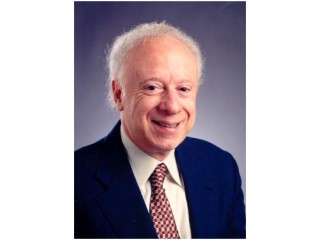
Joseph L. Goldstein biography
Date of birth : 1940-04-18
Date of death : -
Birthplace : Kingstree, South Carolina,U.S.
Nationality : American
Category : Science and Technology
Last modified : 2011-12-20
Credited as : biochemist and geneticist, pioneer in the study of cholesterol metabolism, Nobel laureate
1 votes so far
Dr. Goldstein received a BS in chemistry from Washington and Lee University in 1962 and his M.D. from the University of Texas Southwestern Medical Center in 1966. In 1985 he received the Nobel Prize in Physiology or Medicine (together with Michael S. Brown) for his research on the metabolism of low density lipoprotein (LDL), and has won numerous other awards for his contributions related to genetic diseases.
Returning to the University of Texas Health Science Center in Dallas in 1972 (now called UT Southwestern Medical Center) Goldstein and his close colleague Brown researched cholesterol metabolism and discovered that human cells have low-density lipoprotein (LDL) receptors that extract cholesterol from the bloodstream. The lack of sufficient LDL receptors is the cause of familial hypercholesterolemia, which predisposes heavily for cholesterol-related diseases. In addition to explaining the underlying pathology of the widely-observed link between high levels of circulating cholesterol as LDL and coronary artery disease, their work uncovered a previously-unappreciated fundamental aspect of cell biology - Receptor-mediated endocytosis.
Goldstein and Brown's findings led to better understanding the mechanism of action of statin drugs, the cholesterol-lowering compounds that today are used by 16 million Americans and are the most widely prescribed medications in the United States. New federal cholesterol guidelines are expected to triple the number of Americans taking statin drugs to lower their cholesterol, reducing the risk of heart disease and stroke for countless people. Subsequently the team led by Drs. Brown and Goldstein elucidated the role of lipid modification of proteins (protein prenylation) in cancer.
In 1993, their postdoctoral trainees Wang Xiaodong and Michael Briggs purified the Sterol Regulatory Element-Binding Proteins (SREBPs), a family of membrane-bound transcription factors. Since 1993, Drs. Goldstein, Brown, and their colleagues have described the unexpectedly complex machinery that proteolytically releases the SREBPs from membranes, thus allowing their migration to the nucleus where they activate all the genes involved in the synthesis of cholesterol and fatty acids. The machinery for generating active SREBPs is tightly regulated by a negative feedback mechanism, which explains how cells maintain the necessary levels of fats and cholesterol in the face of varying environmental circumstances.
Goldstein is a Regental Professor of the University of Texas Southwestern Medical Center at Dallas, holds the Julie and Louis A. Beecherl Distinguished Chair in Biomedical Science, and the Paul J. Thomas Chair in Medicine. Frequently mentioned as a candidate for nationally-prominent positions in scientific administration, Goldstein, like his colleague Michael S. Brown, elects to continue hands-on involvement with research. Together, they lead a research team that typically includes a dozen doctoral and postdoctoral trainees. He and his colleague are among the most highly cited scientists in the world.
Goldstein currently serves as Chairman of the Albert Lasker Medical Research Awards Jury and is a member of the Boards of Trustees of the Howard Hughes Medical Institute and The Rockefeller University. He is also a member of the U.S. National Academy of Sciences and a Foreign Member of The Royal Society.
















